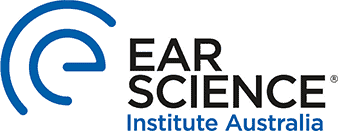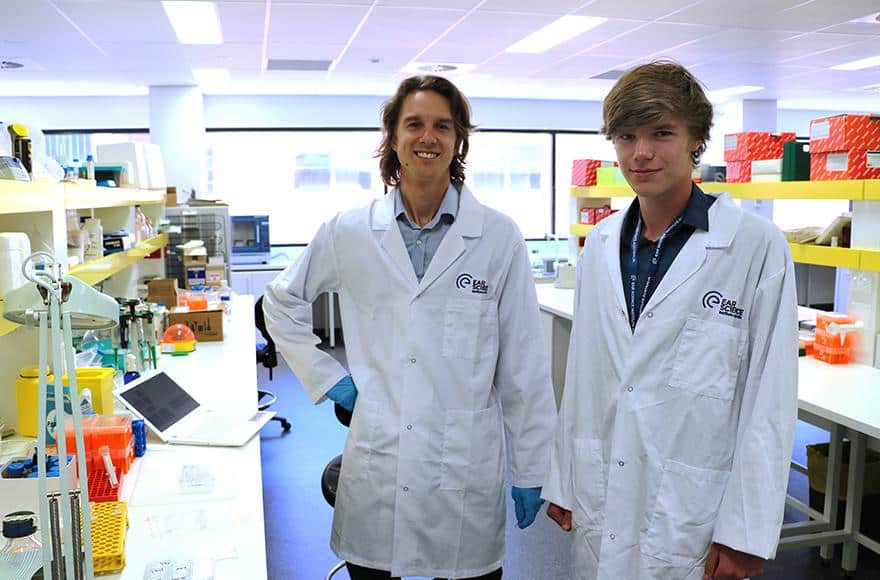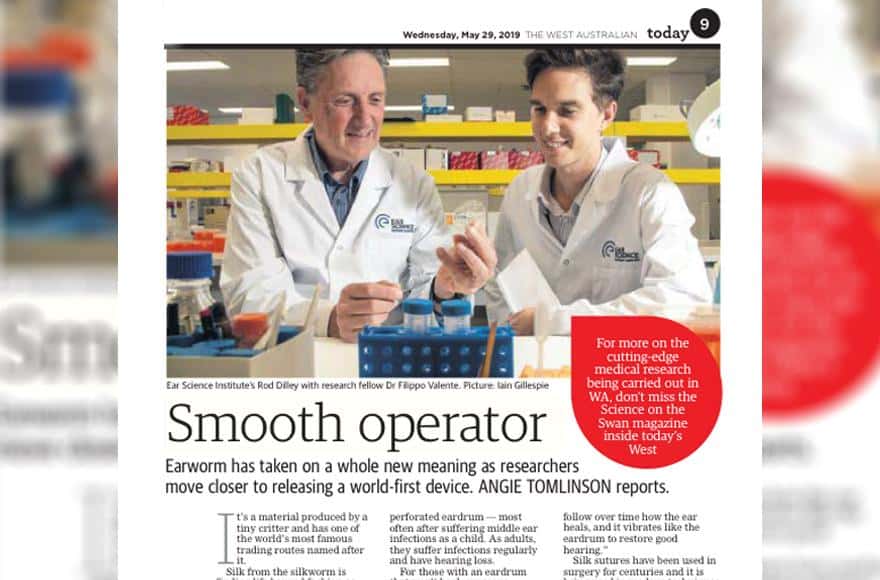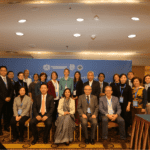Chronic Middle Ear Disease and the ensuing perforated eardrums impact millions around the world, reducing hearing and causing complications, including infections, which take the lives of nearly 30,000 people every year. The locally-made invention provides cure and gains support of international science funding body Wellcome Trust to get the device to market faster.
In a world-first trial, a team of Perth and Melbourne researchers and scientists will next year be closer to restoring hearing to patients with painfully damaged eardrums by combining science and silkworms to create a tiny device known as ClearDrum which is similar in appearance and size to a contact lens.
The revolutionary technique is the result of an exhaustive design, manufacturing, testing and analysis team led by the Perth-based surgeon-scientist Professor Marcus Atlas from Ear Science Institute Australia and Ear Science Centre at the University of WA, in collaboration with fibre experts at Deakin University’s Future Fibres Hub.
The team has created a tiny bio-compatible silk implant known as ClearDrum on which the patient’s own cells grow and flourish resulting in a healed eardrum. Tested over numerous years in the laboratory at Ear Science and Deakin, the implant shows the ability to perform even better than a person’s original eardrum.
Surgeon scientist Professor Atlas, who specialises in ear and hearing disorders, said the bio-compatibility, strength and transparency of the implant provides an advantage for the patient that has never been seen before. The reduced complexity and time within surgery provides an even greater advantage and will allow the implant to be used in more cases and by more surgeons in more countries than current solutions.
Chronic Middle Ear Disease is the most common cause of perforated eardrums – commonly known as “burst eardrums” –suffered by up to 330 million people worldwide. The infection can be difficult to contain resulting in damage to the eardrum and mastoid bone with hearing loss and pain occurring within the ear.
The current surgical procedures used for repairing perforated eardrums involves making grafts from the patient’s own tissues and using specialised and delicate microsurgery techniques and applying them to the eardrum to close the hole. The patient is quite often required to return to surgery for further procedures due to limitations of the current methods.
The innovative process is expected to be less expensive, less invasive and promising quicker healing of the eardrum. Professor Atlas and Professor Xungai Wang from Deakin University travelled to London to provide details to UK’s Wellcome Trust, which supports innovation and science for the betterment of humanity. There, the project was awarded nearly $4Million by The Wellcome Trust Translation Fund to finance human clinical trials in an effort to bring this implant to market as quickly as possible and reduce the impact of perforated eardrums worldwide.
Western Australia’s own Nobel Laureate Professor Barry Marshall commented that “ClearDrum is an example of the translational research and world-first innovations being conducted here in Perth. It puts Western Australia on the map for science and showcases how research can result in solutions that have a global impact on the lives of so many millions of people.”






